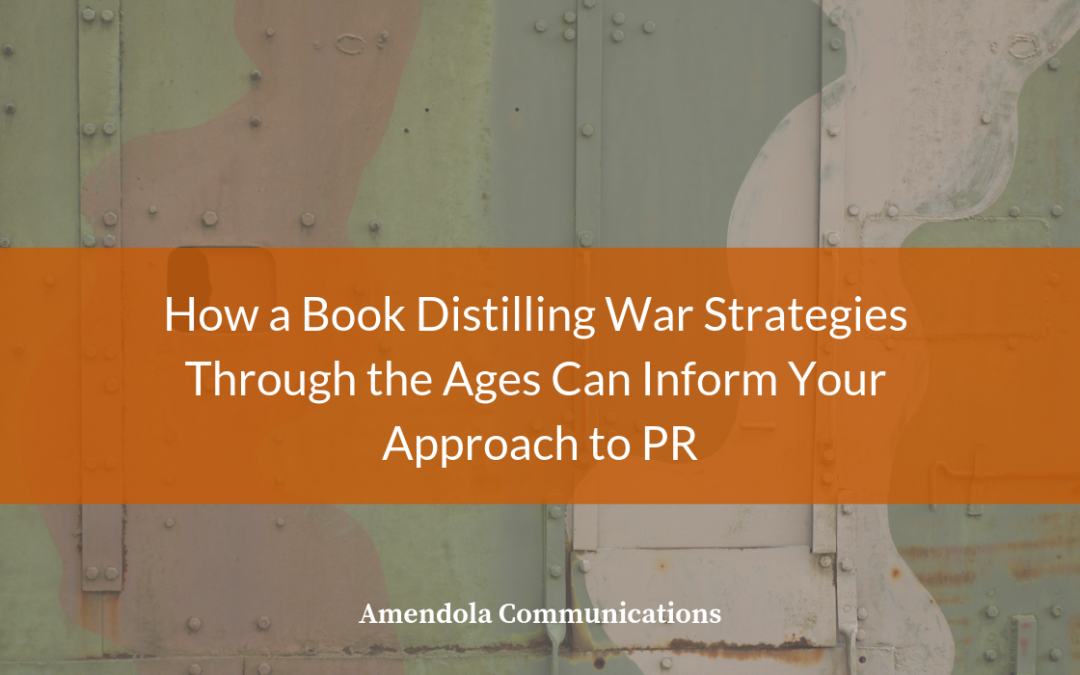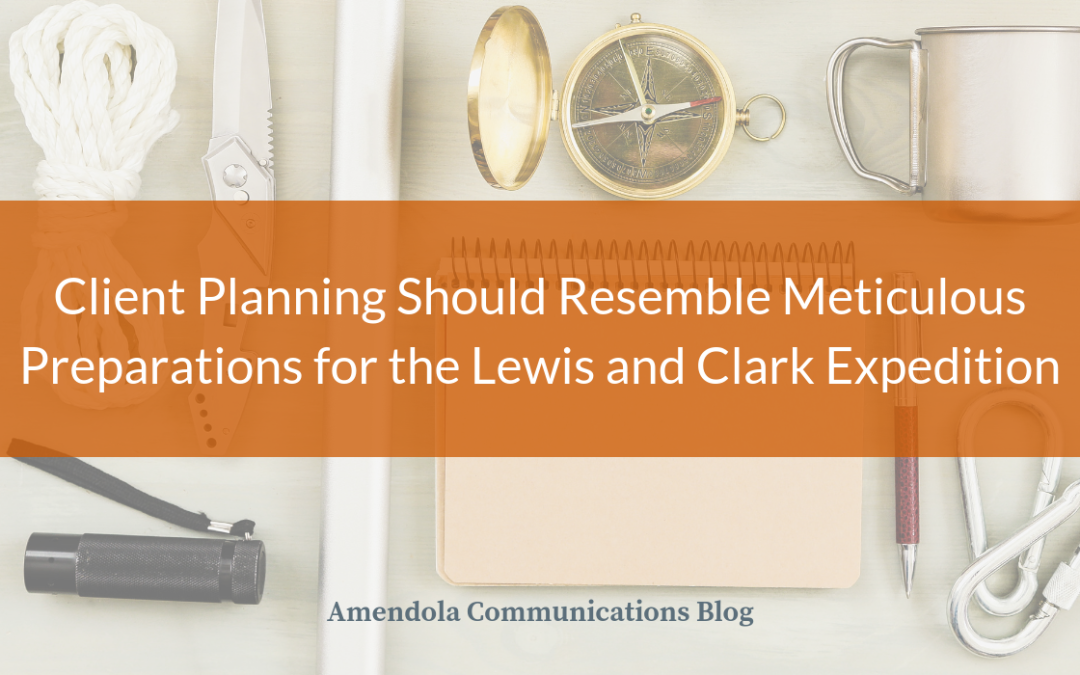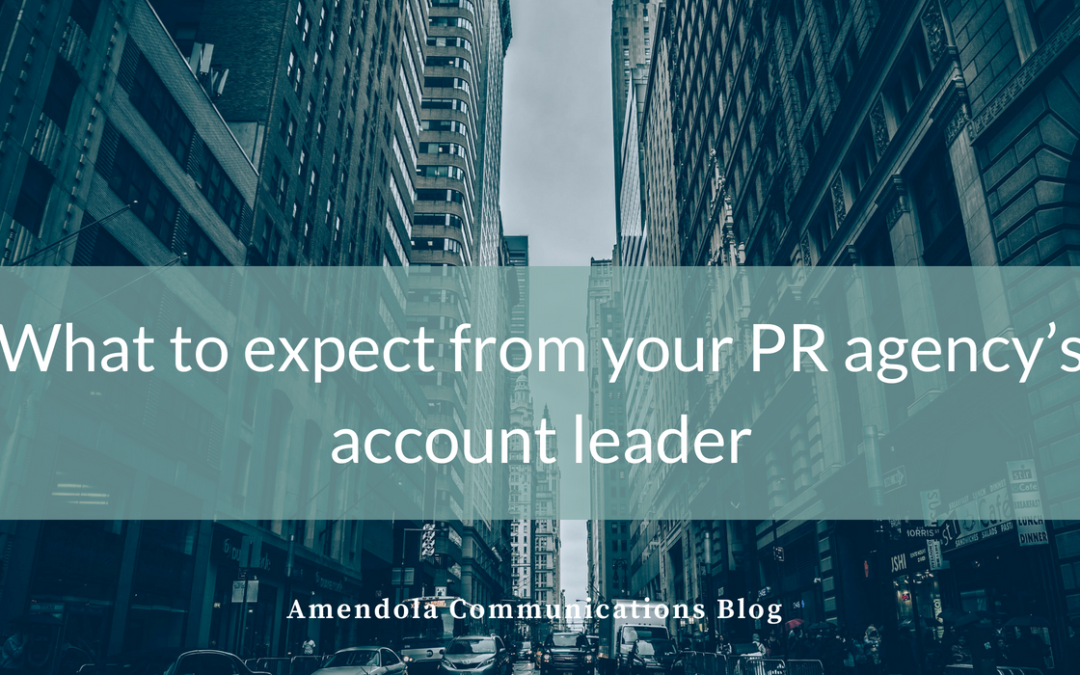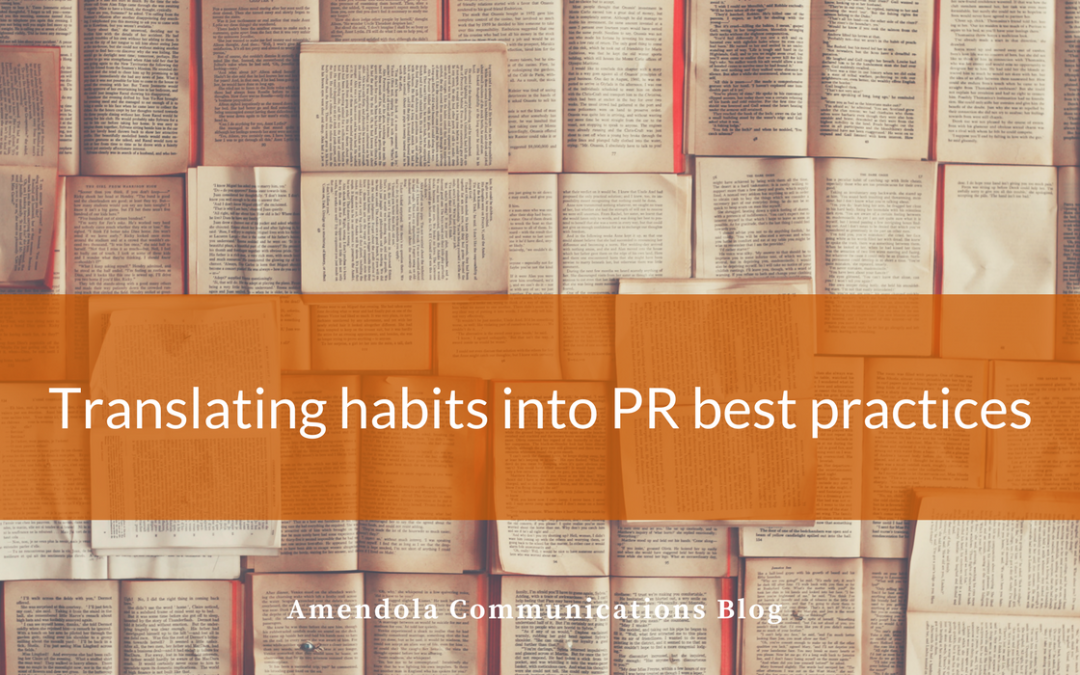by Philip Anast | Jul 31, 2019 | Blog
Even before English economist William Stanley Jevons and other 19th Century luminaries formalized the idea of marginal utility, business people grappled with sustaining customer desires for their goods and services.
While Jevons had commodities in mind, I believe marginal utility is relevant to PR programs, too, especially in our digital world. Keeping stakeholders informed with fresh, compelling news, perspectives and content is a necessity to maintain their interest and attention.
One key group with which to build and cultivate such relationships is industry analysts. These influencers are different than traditional members of the media and bloggers, and an organization’s approach to them must be different, too.
Here are six recommendations for building a strong analyst relations program – one that will create third-party validation for a healthcare company’s services and technologies:
Don’t treat analyst briefings and media interviews the same
- In a media interview, the reporter asks the questions, and the source answers them while bridging to her own messaging and agenda as the opportunities arise
- A successful analyst briefing, however, is a dialogue, where the client tries to gain as much insight from the analyst as the knowledge it imparts about its company, positioning, and go-to-market strategy
Work with analysts and their schedulers weeks in advance of desired briefings
- Unlike reporters that expect sources to be available on a moment’s notice for their assignments, industry analysts often work on longer lead times
- Use such lead times to orchestrate the objectives of your analyst briefing, even scripting what an ideal briefing looks like
- Follow scheduling protocols; often, analysts require a company to work with scheduling colleagues, and not directly, to secure briefings
Avoid lengthy PowerPoint presentations in the actual briefings
- Time is currency, and analyst briefings don’t happen with the same analyst firm frequently unless there is a paid relationship
- Provide a thorough background on your company from a strategic perspective and with the market clearly in mind, but leave the lengthy presentations as leave-behinds – or better yet, provide these materials ahead of the briefings (a requirement with some firms)
- Focus on how your offerings address current market needs and elicit analyst feedback; remember, industry analysts are experts in specific market segments, so leverage that expertise to the extent they’re willing to share their views
Avoid making product announcements the sole messaging points in briefings
- While product launches and technology enhancements are important to keep key stakeholders informed, use analyst encounters to discuss corporate positioning, larger market issues and company strategies
- That’s not to say analysts should not be briefed on new products, but put those products in the context of the challenges the sector is facing and the problems the new products solve
- Product details can be incorporated into PowerPoints, or via links to company web sites or microsites, for further study and reference
Gaining coverage in analyst reports should NOT be the only reason for engaging analysts
- For smaller HIT companies, securing feature coverage is often difficult
- However, a successful analyst relations program builds trust and credibility
- Over time, those benefits can accrue by having an analyst drop your company’s name with her own clients as a problem-solver worthy of industry consideration
- Securing an analyst as a media reference is another worthwhile pursuit, if the analyst is amenable
Don’t overplay your hand
- Unless there is a paid relationship in place, analysts customarily accept one, or maybe, two briefings from companies they cover in their market spaces each year
- Instead of inundating analysts with news releases and briefing requests, build a steady cadence of meaningful connections – perhaps even summarizing events in a quarterly e-newsletter
- Use industry conferences, such as HIMSS, to connect with analysts in-person
Keeping these recommendations in mind can produce rich analyst relationships and help companies advance their PR and marketing goals – even when they don’t have the means for paid relationships.

by Philip Anast | Mar 27, 2019 | Blog
In the months following the fall of Saigon and America’s exit from Vietnam, military personnel at the U.S. Naval War College studied the classics to find answers to the humiliating defeat, according to John Lewis Gaddis, Yale professor, historian and author of the book, “On Grand Strategy.”Gaddis’ book explores war strategies, and the leaders behind them throughout history from Xerxes, Pericles, Octavian, Elizabeth I, Lincoln, Wilson, Franklin Roosevelt and others to the great thinkers who informed such strategies, like Sun Tzu, Virgil, St. Augustine, Machiavelli, the Founding Fathers, Clausewitz, Tolstoy, F. Scott Fitzgerald and Isaiah Berlin.
While primarily a book about war and leadership, I found application for why and how companies should communicate.
There are a few things that we’ll want to ponder on this journey, thanks to Professor Gaddis:
Is it better to be a hedgehog (the person with the big idea or doing one thing really well) or a fox (someone good at a lot of little things)?
How does a PR team align aspirations (or ends), which are unlimited, with capabilities (means), which are finite?
How do time, space and scale factor into PR strategy?
Fox vs. hedgehog
Berlin the philosopher and World War II political theorist for Great Britain first wrote about the fox and the hedgehog, positing which possesses the finer quality: Is it better to have the fox’s sensitivity to its surroundings or a hedgehog’s sense of direction? He concludes that people should draw upon both. A compass is necessary to know where you’re going, but you still need to watch what you may step into.
If you were to ask Gaddis, however, he might say that the hedgehog is the one who can articulate a soundbite for media interviews, but the fox may share too many ideas or points of view to be effective. One can draw the conclusion, then, that it’s up to the PR people executing a strategy to leverage the executive with the right intellect and temperament for the right opportunity.
Preparation, delegation and execution
Besides the right PR approach and source, the necessity of preparation and delegation are paramount.
Elizabeth I of England, for example, didn’t try to manage so many things without delegating to people closest to a situation unlike her rival Philip II of Spain who micromanaged, Gaddis writes. He adds: The higher one rises in an organization, the thinner the air gets, which can cloud judgment. Prudent leaders reflect on everything that could happen in a given campaign or situation but aren’t paralyzed by the process. They align aspirations with capabilities.
It’s great to aspire being in The Wall Street Journal, but if a company doesn’t have the market presence, customers and problem-solving stories to share, it can be a futile exercise while spending the time targeting the publications whose audiences can garner sales is the more effective choice.
Don’t let the ends become the means
As Napoleon plodded deeper into Russia, Gaddis relates, there came a point where he apparently forgot his mission. He had acquired so much territory, and pressed his campaign further and further, that he ultimately loved war for itself and not as a means to an end.
Getting tons of placements for the sake of getting placements may check off a box on a list, but if they don’t move the needle of your PR program and communication goals, then they are for naught. Don’t let your PR program become Salamis, as for Xerxes, or Tarutino for Napoleon.
Use common sense and humility
Gaddis cites Sun Tzu (“The Art of War”), who advises to avoid the enemy where he is toughest, and to pursue where weakest. In a PR context, that might mean pursuing low-hanging “media” fruit for a time until you have refined your story and built a portfolio of coverage for attacking the “harder” publications. Maximizing those initial placements, via social networking and content marketing, can prepare you to focus on the national and business media when the time is right.
Furthermore, don’t be afraid to humble yourself to get the job done. John Quincy Adams did as much, Gaddis writes. Adams, the scion of a Founding Father and one from whom so much was expected in life, went from being president to congressman, but in doing so, used the latter station as a platform to raise the slavery issue, eventually passing the mantle to Abraham Lincoln.
I realize I’m at risk of oversimplifying the connection to PR here, but I think there is some merit: Taking informational interviews with reporters in spite of such encounters not resulting in coverage can be valuable. Demonstrating a willingness to work with reporters on their schedules and in their context can go a long way toward building the credibility and trust necessary that will result in opportunities down the road.
Use competitors to draw awareness to your issue(s)
The Lincoln/Douglas debates showcased a well-known Senator Stephen Douglas against the upstart Lincoln, who had not achieved much at that point of his career, Gaddis writes. But Lincoln used those debates to grow his awareness and renown, and focus people’s attention on slavery.
In much the same way, companies should look to the issues of our day social determinants of health, clinician burnout, patient experience, patient access to care, and reducing waste and be willing to speak out on their positions and get their customers to do the same even if it means they are part of broader stories that include competitors.
Time, space and scale are things that generals consider. The Russians retreated from Moscow, in seeming defeat, to draw Napoleon deeper into their country’s heartland. They used time, space and scale to mete out victory. But time, space and scale also are considerations for company leaders and their PR teams as they figure out how best to communicate their value to their audiences and the marketplace at large.

by Philip Anast | Dec 19, 2018 | Blog
In Stephen Ambrose’s book “Undaunted Courage,” readers learn about the courageous Lewis and Clark Expedition, and the advanced planning and preparation that went into such a grand, historic adventure. It got me thinking just how important a fraction of such planning is for a client’s public relations program.
Depending on the nature of the agency/client relationship, PR plans can go many different ways.
But there are some key objectives necessary for every plan. They include:
- Setting the parameters of a PR program and the appropriate expectations of results with clients
- Providing guidance on program priorities
- Establishing a roadmap for tactical execution
Usually, the account executive spearheads the development of a plan in conjunction with other members of an account team, and certainly with the insights of the client’s PR and marketing leads.
From my perspective, each PR plan should be original to a client, given its circumstances, yet still draw upon the best practices of the agency.
Furthermore, the account executive should confirm the form-factor of such a plan. Is a narrative proposal in Word, a PowerPoint presentation, or an Excel spreadsheet with tabs the best way to communicate the agency’s thought process? Ask your client before embarking on one vs. another.
It should go without saying, but any plan should be built on sound research, outlining key issues and trends related to a client’s business and market space, and include target audiences, competitors, and influencers. Brainstorming among client team members is one effective way to generate fresh ideas, and to develop strong communication goals, strategies and tactics in support of the client’s overall business objectives.
A detailed PR plan should consider the following program elements:
- Situational analysis
- Share of voice and social amplification
- Influencing the influencers
- Target verticals
- Target audiences
- Business goals
- Communication goals
- PR strategies and recommendations
- PR tactics (may include such things as editorial calendars, and speaker, award and event research based on the program’s direction)
- Target influencers (media and others)
- Budget
- Calendar of activities
- PR metrics
- Any optional program elements for client consideration, such as analyst relations
At its heart, a PR plan establishes the communication objectives, strategies and tactics toward reaching a client’s business goals. Such materials are crucial to ensuring that all key constituencies from executives to line-of-business and marketing leaders are aligned with the direction of the program. Such a plan serves as a beacon, and ensures that everyone agrees with the program’s elements, metrics, budget and results.
And much like Meriwether Lewis, William Clark and the Corps of Discovery, achievements will be celebrated.

by Philip Anast | Aug 22, 2018 | Blog
As a communications executive working with a PR agency, you might assume that your account team members, and especially your main point of contact, practice what they preach. After all, you hired them to communicate your value to target markets.
Yet, it doesn’t hurt to take stock of your agency’s communications prowess. It can be the difference between a trusted partnership and a stressful relationship.
Sound client communication is the forerunner to delivering value and results on a consistent basis. It facilitates your productivity by making the most of your precious time.
Your account lead is the quarterback that sets the tone for your entire agency relationship.
Here are some best practices and questions to consider:
General communication
- At the outset of a relationship, explain your preferred methods of communication and set an expectation of frequency
- Expect that even in a long-distance relationship, your agency, and especially your account executive, is committed to periodic face-to-face strategy and planning meetings
- Insist that your account lead make the most of each encounter with you
- Does s/he empower you to take action or make a decision rather than suspend progress until you return a phone call?
- For e-mail communication, is s/he concise yet thorough with a request?
Account progress
- Do you consistently get a sense of progress, alignment with program objectives and results?
- Does your account lead explain how objectives are being addressed?
- Does s/he use consistent language when discussing projects?
Merchandising results
- Insist that your account lead explain how a placement accomplishes specific program objectives
- S/he also should explain how results validate the direction of a program or indicate program adjustments
- Does s/he detail how coverage can be used in sales and marketing activities, e.g. how a piece can be socialized through Click to Tweet and other social tools?
- Does s/he offer to assist in tactical execution?
Holding your agency lead accountable to these and other best practices can help your agency relationship flourish and deliver tangible results for your organization.

by Philip Anast | Apr 25, 2018 | Blog
In his book, “The Power of Habit: Why We Do What We Do in Life and Business,” New York Times business reporter Charles Duhigg explores the neurology of habits, why habits form in human beings, and how we can change them through a systematic approach of identifying their cues, rewards and routines.
Establishing new habits can become automatic, so that we don’t even think about them.
Duhigg employs multiple case studies to convey how habits are teachable to individuals, organizations and businesses, and societies, illustrating their profound impact. In one example, he takes us through the NFL coaching career of Tony Dungy and how he instilled certain habits in his players to help them react to cues in game situations without having to overthink their actions. The ultimate result was a Super Bowl championship in Indianapolis.
Another one centers on Paul O Neill, former treasury secretary in the second Bush administration and earlier, the President of Alcoa. O Neill’s emphasis on safety in his plants, much to the initial chagrin of fellow executives and board members, helped quadruple Alcoa revenues while instilling worker habits that empowered them to offer ideas for other improvements and best practices. The results were a happier workforce, and crucial business alignment between rank-and-file workers and management.
Such demonstrated success informs my thinking around best practices. While we have talented staff members who bring their own unique experiences and skillsets to Amendola Communications, it is important that we coalesce around certain “habits,” or best practices, to ensure consistent client service, delivery and results.
Best practices around account management/client service, content development, social and media relations help our agency be prodigious client stewards with the goals of fulfilling our PR program work and building long-term client relationships. Equally important is a workforce that understands its role, feels empowered to do its best, and delivers great results. In future blog posts, I’ll explore best practices around client planning and client communication.



